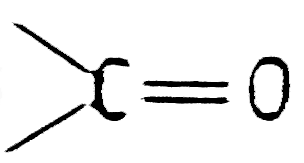Why benzene is reluctant to show addition reaction?
Step-by-Step Solution:
1. Understanding Benzene's Structure:
- Benzene (C6H6) is a cyclic hydrocarbon with a planar structure. It has alternating single and double bonds, but due to resonance, all the bonds are equivalent, and it is often represented as a hexagon with a circle inside.
2. Aromaticity:
- Benzene is classified as an aromatic compound. Aromatic compounds are characterized by their stability due to a special type of bonding called resonance, where the π electrons are delocalized over the entire ring structure. This delocalization follows Hückel's rule (4n + 2 π electrons, where n is a non-negative integer).
3. Addition Reactions:
- In an addition reaction, a molecule (like Br2) would add across one of the double bonds in benzene. This would involve breaking the π bond to accommodate the new atoms, leading to the formation of a saturated compound.
4. Loss of Aromaticity:
- When benzene undergoes an addition reaction, it loses its aromatic character. The stability provided by the delocalized π electrons is disrupted, resulting in a less stable compound. The loss of aromaticity leads to an unstable intermediate.
5. Reluctance to React:
- Due to the instability associated with the loss of aromaticity, benzene is reluctant to undergo addition reactions. Instead, it prefers to undergo substitution reactions, where one hydrogen atom is replaced by another atom or group (e.g., bromine) without disrupting the aromatic system.
6. Substitution Reaction:
- In a substitution reaction, benzene reacts with bromine (Br2) in the presence of a catalyst (like FeBr3) to form bromobenzene and hydrogen bromide (HBr). This reaction preserves the aromaticity of benzene, maintaining its stability.
Conclusion:
Benzene is reluctant to show addition reactions because such reactions would destroy its aromaticity, leading to an unstable compound. Instead, it favors substitution reactions that allow it to retain its aromatic character.
---
- Benzene (C6H6) is a cyclic hydrocarbon with a planar structure. It has alternating single and double bonds, but due to resonance, all the bonds are equivalent, and it is often represented as a hexagon with a circle inside.
- Benzene is classified as an aromatic compound. Aromatic compounds are characterized by their stability due to a special type of bonding called resonance, where the π electrons are delocalized over the entire ring structure. This delocalization follows Hückel's rule (4n + 2 π electrons, where n is a non-negative integer).
- In an addition reaction, a molecule (like Br2) would add across one of the double bonds in benzene. This would involve breaking the π bond to accommodate the new atoms, leading to the formation of a saturated compound.
- When benzene undergoes an addition reaction, it loses its aromatic character. The stability provided by the delocalized π electrons is disrupted, resulting in a less stable compound. The loss of aromaticity leads to an unstable intermediate.
- Due to the instability associated with the loss of aromaticity, benzene is reluctant to undergo addition reactions. Instead, it prefers to undergo substitution reactions, where one hydrogen atom is replaced by another atom or group (e.g., bromine) without disrupting the aromatic system.
- In a substitution reaction, benzene reacts with bromine (Br2) in the presence of a catalyst (like FeBr3) to form bromobenzene and hydrogen bromide (HBr). This reaction preserves the aromaticity of benzene, maintaining its stability.
Benzene is reluctant to show addition reactions because such reactions would destroy its aromaticity, leading to an unstable compound. Instead, it favors substitution reactions that allow it to retain its aromatic character.
Topper's Solved these Questions
- HYDROCARBONSBOOK - AAKASH INSTITUTE ENGLISHCHAPTER - HYDROCARBONSEXERCISE - ADDITIONAL INFORMATION
3 Videos
- HYDROCARBONSBOOK - AAKASH INSTITUTE ENGLISHCHAPTER - HYDROCARBONSEXERCISE - ASSIGNMENT SECTION-A COMPETITION LEVEL DIFFER BY
50 Videos
- HALOALKANES AND HALOARENES BOOK - AAKASH INSTITUTE ENGLISHCHAPTER - HALOALKANES AND HALOARENES EXERCISE - ASSIGNMENT SECTION -D
15 Videos
- HYDROGENBOOK - AAKASH INSTITUTE ENGLISHCHAPTER - HYDROGENEXERCISE - ASSIGNMENT (SECTION - D) (Assertion-Reason Type question)
15 Videos
Similar Questions
Why do alkenes show addition reactions?
View SolutionEthene undergoes addition reaction.
View SolutionExplain, why does benzene not undergo addition reactions easily?
View SolutionUnsaturated hydrocarbons contain multiple bonds between the two C-atoms and show addition reaction. Give the test to distinguish ethane from ethene.
View SolutionWhich gives nucleophilic addition reaction?
View SolutionBorazine and benzene show striking similarities in their properties. This led to a labelling of borazine as 'inorganic benzene'. However, in contrast to benzene, borazine readily undergoes addition reactions. The appropriate reason for this difference is:
View SolutionWhy do alkenes undergo electrophilic addition reactions ? Discuss the mechanism of electrophilic addition reactions of alkenes.
View SolutionWhy do alkenes and alkynes undergo addition reactions ? Describe some important addition reactions of alkenes and alkynes.
View SolutionAlkenes
 and carbonyl compounds
and carbonyl compounds  both contain a π bond but alkenes show electrophilic addition reactions whereas carbonyl compounds show nucleophilic addition reactions. Explain.
both contain a π bond but alkenes show electrophilic addition reactions whereas carbonyl compounds show nucleophilic addition reactions. Explain.
View SolutionWhat are addition reactions ? Discuss the mechanism of different types of addition reactions.
View Solution
